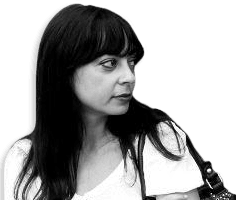Yes, coming to an Iranian barber shop near you… Ali Abedi, the secretary of the Hijab and Chastity conference held in Tehran, has said that the country's newly approved men’s hairstyles are to be named after Iranian cities and provinces.
“For example one hairstyle can be named, 'the Shiraz hairstyle,'” Abedi was quoted as saying by Iranian news websites. Apparently, naming the hairstyles will make it easier for customers to tell the barber which state-sanctioned haircut they want.
Iran’s Culture Ministry recently unveiled a number of approved hairstyles that are considered Islamic. Iranian officials have said that the move is aimed at fighting the spread of unconventional hairstyles and promoting Islamic and Iranian culture.
Women are next. The head of the conference, Zhale Khodayar, said that the Culture Ministry is also going to print pictures of approved hairstyles for women in a magazine.
But are they likely to catch on? A hairdresser in Tehran, Saeed Vedayi, is quoted by the “Jam-e Jam” website as saying that the new cuts won't be popular among Iranian youth "unless their taste changes.” As Vedayi reminded us, in recent years young people were more interested in getting “Western haircuts” with names such as “Typhus,” “Metal,” “Pineapple," and “Electric Shock."
(Although, confusingly, another barber, Moloud Emami, said that the approved haircuts are similar to those that are already popular among young people.)
We'll see. RFE/RL spoke to a 14-year-old boy in Tehran who confirmed what we might suspect: that he doesn’t think any of his friends would want a hairstyle that's named “Shiraz." ”It doesn’t sound cool and why would they want a haircut that's approved by the government," he said.
For more than 30 years the Iranian authorities have tried to control every aspect of people's lives including their appearances with a mixture of force, warning, and preaching.
Many young Iranians have fought back by resisting state guidelines and rules: young women and girls have done their best to remain trendy and attractive despite the compulsory hijab; young men favor trendy hairstyles and ponytails and dress to impress.
With that latest foray into personal grooming, the authorities seem to be waging yet another losing battle.
-- Golnaz Esfandiari
“For example one hairstyle can be named, 'the Shiraz hairstyle,'” Abedi was quoted as saying by Iranian news websites. Apparently, naming the hairstyles will make it easier for customers to tell the barber which state-sanctioned haircut they want.
Iran’s Culture Ministry recently unveiled a number of approved hairstyles that are considered Islamic. Iranian officials have said that the move is aimed at fighting the spread of unconventional hairstyles and promoting Islamic and Iranian culture.
Women are next. The head of the conference, Zhale Khodayar, said that the Culture Ministry is also going to print pictures of approved hairstyles for women in a magazine.
But are they likely to catch on? A hairdresser in Tehran, Saeed Vedayi, is quoted by the “Jam-e Jam” website as saying that the new cuts won't be popular among Iranian youth "unless their taste changes.” As Vedayi reminded us, in recent years young people were more interested in getting “Western haircuts” with names such as “Typhus,” “Metal,” “Pineapple," and “Electric Shock."
(Although, confusingly, another barber, Moloud Emami, said that the approved haircuts are similar to those that are already popular among young people.)
We'll see. RFE/RL spoke to a 14-year-old boy in Tehran who confirmed what we might suspect: that he doesn’t think any of his friends would want a hairstyle that's named “Shiraz." ”It doesn’t sound cool and why would they want a haircut that's approved by the government," he said.
For more than 30 years the Iranian authorities have tried to control every aspect of people's lives including their appearances with a mixture of force, warning, and preaching.
Many young Iranians have fought back by resisting state guidelines and rules: young women and girls have done their best to remain trendy and attractive despite the compulsory hijab; young men favor trendy hairstyles and ponytails and dress to impress.
With that latest foray into personal grooming, the authorities seem to be waging yet another losing battle.
-- Golnaz Esfandiari





